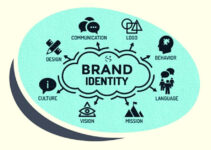Businesses and companies always look for opportunities to reach their destination and what they want like buying supplies at a lower price. You’re wondering right how and why companies manage to sell their products at a lower price relevant to the competitors; it doesn’t just happen out of coincidence. Today, we’ll discuss what is cost leadership; differentiation with price leadership, its strategies, advantages, disadvantages, and examples.
What is Cost Leadership?
Cost leadership is a process of achieving a competitive edge by managing to keep the operational cost lower. It is a highly useful strategy where the price is the important element. However, the main goal of companies to achieve cost leadership is to produce goods at a lower cost relevant to the competitors in the industry. They achieve it through economies of scale, and they manage to do so by finding innovative ways in the operational processes.
When the company finds a low-cost supplier, it is a very good strategy to achieve a costs leader position in the market. If you have got quality labor and an efficient operational process, it would further help you to lower production costs.
Cost Leadership vs. Price Leadership
It is important to mention here that cost and price leaderships are completely different terms. It is possible that the company may have achieved the low costs leader position in the industry, but it is still not offering low-priced products and services. The company would achieve higher profitability strategically than other competitors in the market that offer the product at the same price.
The profit they earn from the costs leader strategy; allows them to compete with low-profit margin competitors and develop innovative strategies in the price-conscious market. The objective of the costs leader brands is to achieve lower-cost production processes, but they don’t lower the price of their products and services. However, it means that the company with a low price doesn’t mean that it would also have the low-cost leader position in the market.
Cost Leadership Strategies
Some of the key strategies that would help you to achieve a cost leadership position in the market are as follows;
Efficient Operations
Operational efficiency allows you to complete your tasks and work in a limited time frame and at a lower cost. If the company is completing its tasks in a short time by spending a limited amount of resources, then it means that the company has achieved the low-cost leader position in the market.
Cheap Raw Material
Companies could also lower their cost depending on their accessibility to cheap raw materials for the production processes. Some companies have to spend a significant amount of money and resources in their production process, and others don’t have to. The access company to a cheap supply chain and raw materials would help the company to achieve low costs leader position in the industry than competitors.
Focus
The size of the company doesn’t matter in order to achieve a low-cost leader position in the market. If the company focuses on the efficiency of its processes and manages to produce one product successfully, then it would achieve a costs leader position in the market. In short, if the company focuses on the production of its processes, then it amplifies the probability that it would become a cost leader in the industry.
Technology
Innovative technology and new methods of production play a significant role in reducing costs. If the company is employing the latest technology and tools, then it would help the company to lower its cost in the long term.
Advantage Size
If you’re buying supplies of a large volume size, then it gives you significant purchasing power. If you make a better deal with the supplier and offer him a reasonable amount of money, it would help you to lower your production cost.
Economies of Scale
Large-scale production and efficiency of the processes would lower the manufacturing cost. The size and scale of the company matter a lot when we talk about economies of scale. In short, large-scale production would lower the per-unit cost.
Advantages of Cost Leadership
Some of the main advantages of cost leadership are as follows;
High Market Share
A significant portion of the consumer market is highly price-conscious. When a company offers low priced products and services, then it attracts the attention of the customer market. Ultimately, the sale of the company would increase due to the low price of products, and it would increase the company’s market share.
Win the Price War
Companies that have the advantage of being the cost leader in the market, then they can withstand the competition in the market. Competitors of the premium price product won’t directly compete with the cost leaders in the market.
Low Price
The efficiency of the production processes helps the company to achieve the cost leader position in the market. They would have the option to lower their price and still make a profit with it.
Disadvantages of Cost Leadership
Some of the main disadvantages of cost leadership are as follows;
Low Adaptability
The market trends and preferences of customers are always changing. The cost leader companies are offering low price products, and it gives them limited options to keep up with the changes in the market.
Rely on Higher Sales Volume
Usually, the cost leaders offer products at a lower price in order to compete in the market and win the market share. It means that they have to sell a large number of products and services in order to make their business profitable.
Hard to Maintain Quality
When the company is using cheap raw materials for the production of its products and services, then it would lower the quality of the product. It is because companies can’t offer quality products at a lower price.
Risky Strategy
We are living in a world of innovation and technology, and the development of new technology would make the previous technology obsolete. It is a highly risky strategy for some companies that want to achieve the cost leader position in the market through technology.
Examples of Cost Leadership
Amazon
Amazon is the world’s leading e-commerce platform and the platform has significant purchasing over the suppliers. It has allowed the company to achieve the cost leader position in the market along with the low price. It is a great platform for meeting the needs of customers.
Aldi
Aldi managed to lower its expenses and employed the most affordable and no-frills marketing strategy. It has allowed the company to offer low-price quality products and services to its target customers.
Conclusion: What is Cost Leadership? Strategy, Pros & Cons, Examples
After an in-depth study of what is cost leadership; differentiation with price differentiation, various strategies, advantages, disadvantages, and examples; we have realized that achieving cost leader position in the market requires a lot of time and effort. If you are planning to develop the cost leader position in the market, then you should keep in mind the abovementioned tips and guidelines.

Ahsan Ali Shaw is an accomplished Business Writer, Analyst, and Public Speaker. Other than that, he’s a fun loving person.


